Perhaps the biggest question new gardeners interested in self-sufficiency ask is "how much land do I need to grow all of my own food?" There have been some astronomical claims on both ends of the spectrum. For a family of four, I’ve heard as low as an 1/8th acre and as high as 10 acres. After the research I did for my vegetarian post, I wanted to build on that data and lay out a method and blueprint for growing all of one’s own food.
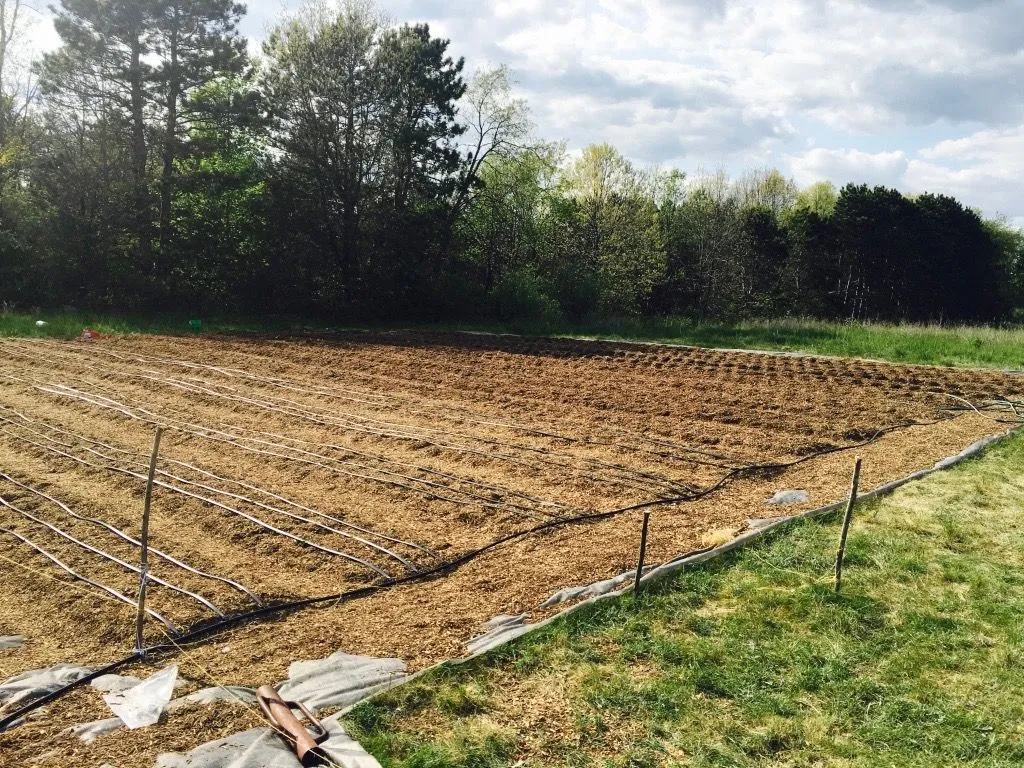
First year trial of strawberry block
The design
In order to grow all of our food we need a system that scales, that is easily comprehended, that rotates seamlessly, that requires few machines, and optimizes labor and costs. We also need a system that can take advantage of succession for orchards, and perennial crops without having empty space lie unproductive as the plants mature. Compost and fertility are exceptionally expensive, so we need a system, a set of plants, and a set of tools that allow us to build soil on site without the laborious task of composting and applying yards and yards of material each year.
The geometry
Because so many of us homesteaders, permaculturists and gardeners start out with little experience I wanted to design a system that allows one to gradually expand, year by year, while building on the previous successes.
To do this we need a repeatable pattern that is divisible by 2s to account for the myriad of crop combinations it will need to accommodate. I designed composable blocks that consist of 16, 30” (27cm) wide permanent raised beds with 15” (38cm) wide paths between each bed.
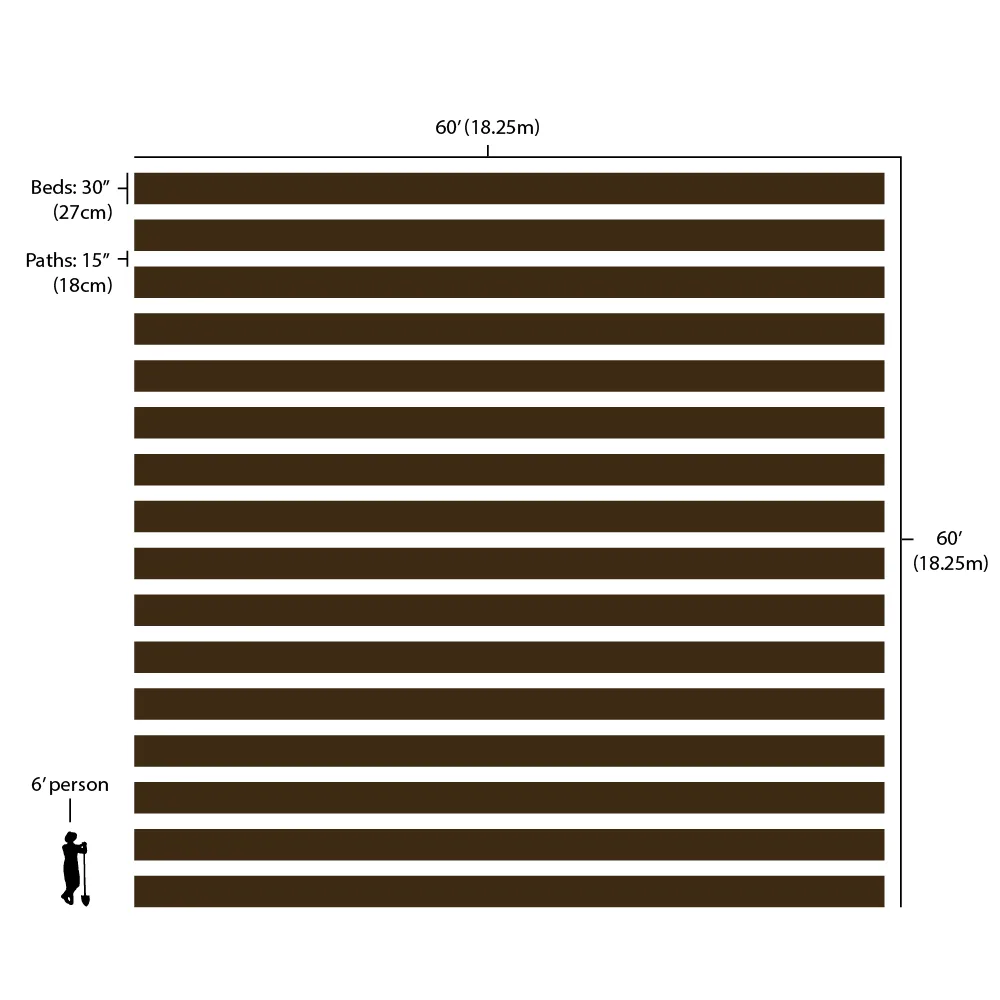
I chose 30” (27m) bed widths because this size is the industry standard and most market garden tools are built specifically for it.
I chose 15” (38cm) paths because we don’t want to waste potential growing space on the paths, but we still want to be able to walk them easily. This path width gives us just enough room to move around without using up too much valuable growing space.
The Grid
These blocks can then be composed to form a 3 x 3 grid, encompassing a full acre.
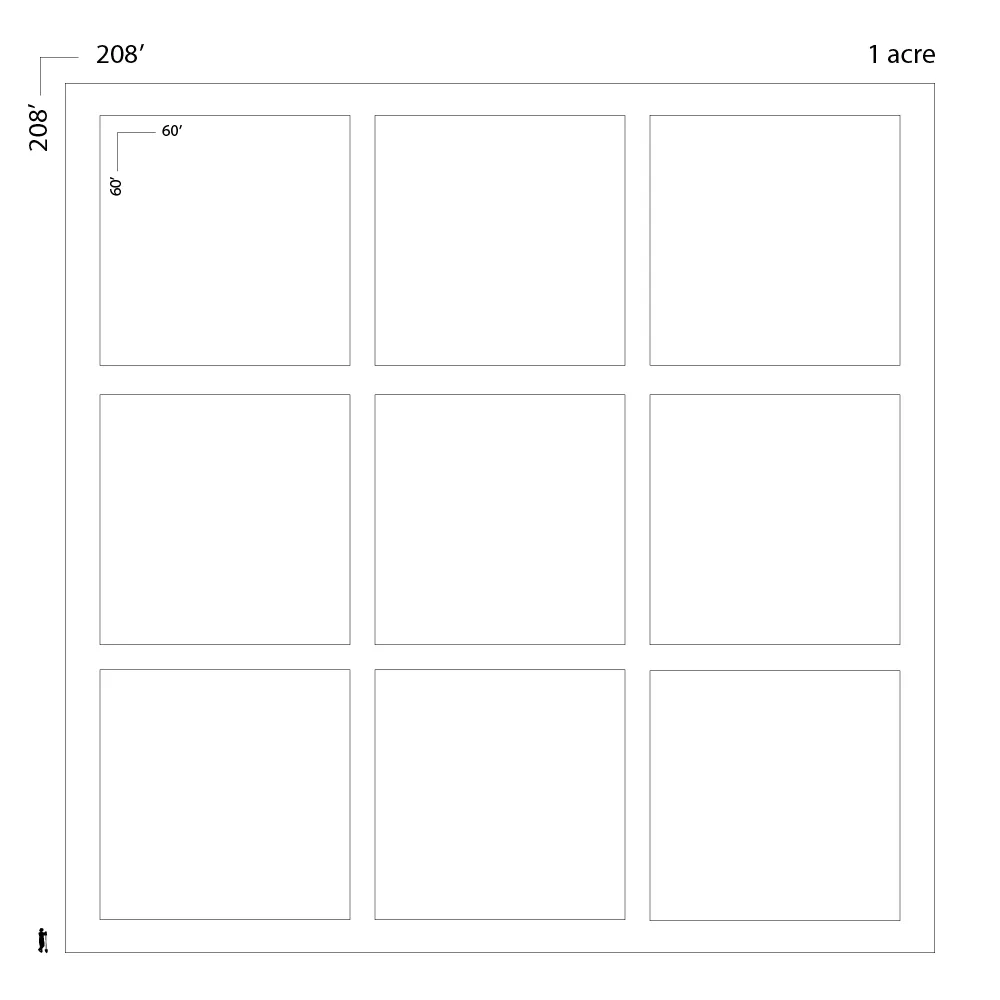
Crop Rotation
Because all of the blocks are sized equally, it is as simple as rotating the 8 outer blocks planting plan in a clockwise, or counterclockwise fashion. Legumes, vegetables, and staple crops are placed strategically to fertilize and invigorate the soil as they rotate through the system. No block will ever be more than two years from a nitrogen-fixing legume crop. The staple crops add more biomass to the soil as they are flail mowed and left in place after harvest. The central bed is for perennial food crops and/or plants beneficial to the system and ecology.
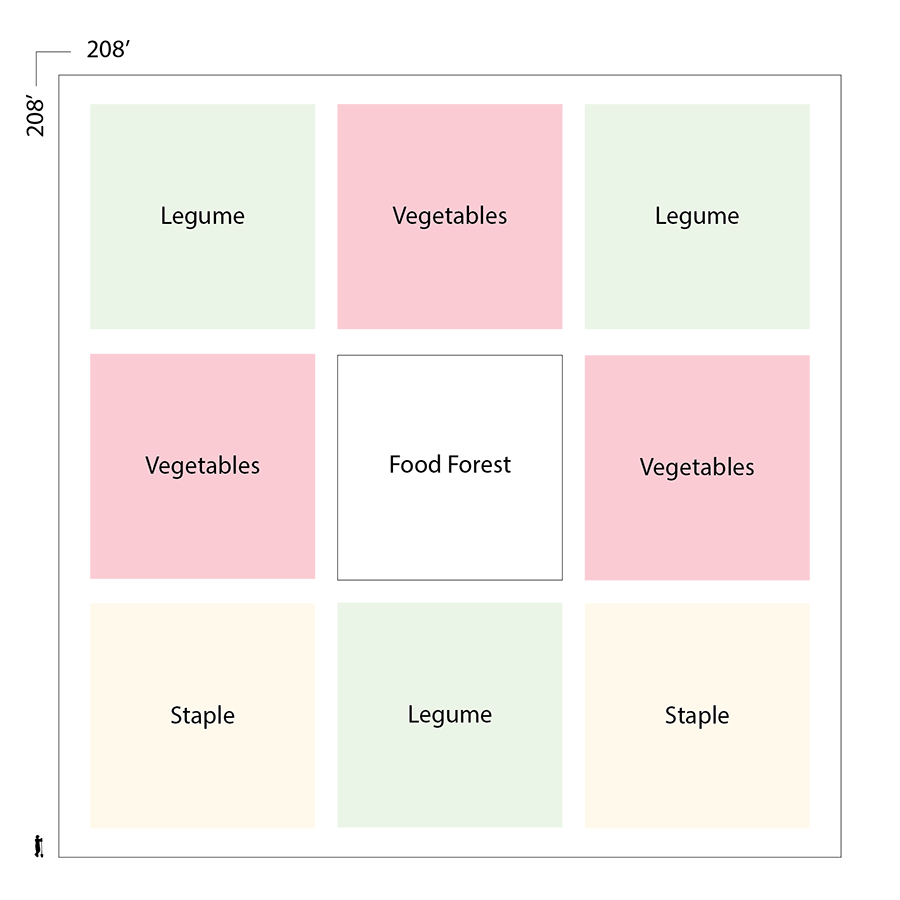
Food Plan
Now that we have our base structure, let’s see what we can grow within it and design a plan that meets the needs of a family of four.
Food needs
Adult Male: 2500 calories, 75g protein
Adult Female: 2000 calories, 50g protein
Child: 1500 calories, 30g protein
For a traditional family of 4, we’ll need to produce enough food to supply 7500 calories and 185g of protein a day.
After building a table with the calories per pound, protein per pound, yield per 100 square feet, and yield per bed for a sampling of foods, I worked out the yearly amounts needed to reach the required nutrient levels, averaged per person, while attempting to stay reasonably balanced between the food groups.
| Crop | Cal/lb | Pro/lb | lbs/100 sqft | Yield/Bed | Needs lbs | Needs kg | Beds | Cal | Pro |
|---|---|---|---|---|---|---|---|---|---|
| Beans | 1,588 | 96 | 5 | 7.5 | 30 | 13.61 | 4.00 | 131 | 7.9 |
| Beans Green | 141 | 7.6 | 30 | 45 | 90 | 40.82 | 2.00 | 35 | 1.9 |
| Beets | 195 | 5.1 | 55 | 82.5 | 83 | 37.65 | 1.01 | 44 | 1.2 |
| Broccoli | 127 | 12.7 | 33 | 49.5 | 50 | 22.68 | 1.01 | 17 | 1.7 |
| Cabbage | 109 | 6.53 | 96 | 144 | 142 | 64.41 | 0.99 | 42 | 2.5 |
| Carrots | 195 | 4.1 | 100 | 150 | 150 | 68.04 | 1.00 | 80 | 1.7 |
| Filberts | 2876 | 57 | 7 | 10.5 | 32 | 14.51 | 3.05 | 252 | 5.0 |
| Garlic | 676 | 24.8 | 60 | 90 | 90 | 40.82 | 1.00 | 167 | 6.1 |
| Hemp Seed | 1663 | 90 | 18 | 27 | 108 | 48.99 | 4.00 | 492 | 26.6 |
| Honeyberry | 272 | 7 | 33 | 49.5 | 50 | 22.68 | 1.01 | 37 | 1.0 |
| Leaf Lettuce | 63 | 6.3 | 202 | 303 | 304 | 137.89 | 1.00 | 52 | 5.2 |
| Onions | 172 | 6.2 | 100 | 150 | 150 | 68.04 | 1.00 | 71 | 2.5 |
| Peas | 365 | 10.9 | 25 | 37.5 | 90 | 40.82 | 2.40 | 90 | 2.7 |
| Peppers | 82 | 4.5 | 68 | 102 | 51 | 23.13 | 0.50 | 11 | 0.6 |
| Peppers Dry | 1470 | 45 | 5 | 7.5 | 4 | 1.81 | 0.53 | 16 | 0.5 |
| Potatoes | 350 | 7.7 | 100 | 150 | 300 | 136.08 | 2.00 | 288 | 6.3 |
| Quinoa | 1600 | 73 | 6 | 9 | 36 | 16.33 | 4.00 | 158 | 7.2 |
| Soybeans | 1887 | 154 | 5 | 6.9 | 27.6 | 12.52 | 4.00 | 143 | 11.6 |
| Spinach | 100 | 10.5 | 50 | 75 | 75 | 34.02 | 1.00 | 21 | 2.2 |
| Strawberries | 161 | 3 | 100 | 150 | 200 | 90.72 | 1.33 | 88 | 1.6 |
| Tomatoes | 95 | 5 | 100 | 150 | 150 | 68.04 | 1.00 | 39 | 2.1 |
| Total | 2274 | 98.2 |
Total Protein per person: 98.2
Total Calories per person: 2,274
If we multiply this by four we get 9096 calories and 392 grams of protein. Giving us a surplus of 1,596 calories, and 207g of protein a day. Planning to grow this amount of food will give you enough room for low yields and the unpredictable nature of, well, nature. Any surplus can be processed or fermented for long-term storage, sold, or given away. These yields are on the low end, and as your productivity increases your surplus will grow. It’s always better to be prepared for the worst and be hit with unexpected abundance than the reverse case.
Planting Plan
I took the yearly needs in the table above multiplied by four and organized the plantings in accordance with the design to achieve the below.

- A: 16 Dry Beans
- B: 4 Spinach, 4 Beets, 4 Carrots, 4 Tomatoes
- C: 16 Soybeans
- D: 8 Potatoes, 4 Broccoli, 4 Lettuce
- E: 16 Hemp
- F: 8 Green Beans, 8 Peas
- G: 16 Quinoa
- H: 4 Garlic, 4 Peppers, 4 Cabbage, 4 Onions
- I: 8 Hazelnut, 40 Honeyberries, 16 Strawberries
Spinach, Beets, Carrots, Tomatoes, Garlic, Peppers, Cabbage, and Onions follow legumes because they are high feeders and can benefit from the extra nitrogen. Potatoes, Broccoli, and Lettuce require slightly less nitrogen, so they follow hemp. Hemp benefits from more nitrogen and follows a legume crop, while Quinoa doesn’t require as much nitrogen so it can follow the vegetable crop.
For ease of describing the system, I have left out many vegetables, herbs, fruits, seeds, nuts, and grains. There is practically an endless array of foods that can be grown in this system, imagination and creativity would be the only limiting factors. I’ve chosen ones that can be grown in northern climates, that are productive, easy to process and generally familiar. But this is simply a starting template for illustration purposes.
The Method
This is all good and dandy, but how does one effectively install, and manage a system of this size?
The tools
All the tools listed in my Gardener’s and Market Gardener’s starter packs will be necessary for efficiency’s sake, but obviously, any combination of tools that effectively serve the same purposes will work.
Where do you start?
Each block can be started from lawn, pasture, or fallow land without tilling and with little outside inputs, If you are willing to wait and let nature do the work for you.
Tarping
Laying a tarp down to smother the vegetation below is the easiest and most effective method of preparing a sterile seedbed. It’s simple, requires just a few materials, and works 100% of the time. In order to remove all grass and perennials, the tarp or fabric will need to be left for a full growing season. While this does take much more time than tilling, it keeps the soil horizons intact, encourages soil life, and removes all grass and it’s impossible to kill rhizomes. The method can also be used to turn an area filled with wild raspberries and blackberries into a workable garden soil. Herbicides and tilling will have a hard time competing with its effectiveness.
Cover Cropping
Winter cover cropping and flail mowing, instead of tilling, forms a mulch that keeps weeds back and functions as a slow release fertilizer. The roots slowly die and decay, aerating and feeding the soil over time. Tilling rapidly introduces an overabundance of nutrients and oxygen which causes a surge of bacterial activity. The bacteria quickly deplete the organic matter and die, leaving compacted lifeless, soil. If you’ve ever tilled your soil, you know how amazing, fluffy, and fertile it is in the beginning only to be hard, weed-filled and lifeless by mid-summer. Keeping live roots in the ground year-round feeds your soil life, specifically mycorrhizal fungi. This fungus mines minerals and nutrients from the soil and exchanges them with the plants for sugar. The cover crops will feed the soil throughout the fall, winter, and early spring while smothering out any weeds that may try to germinate during this time.
Green Manures
The combination of cover cropping and heavy rotation with legumes will provide most, if not all, the nutrients needed for your plants. This will save you a lot of time and effort from traditional composting and it’s application.
Year 1: Spring:
- Lay down tarp over block and weigh down (tires, sandbags, bricks, logs all work well)
Year 1: Late Summer/Fall:
- Remove tarp
- Shape beds to 30” wide and paths to 15” by digging or plowing paths 3-6” deep and placing the soil on top of the beds. This will immediately increase the topsoil on the beds by up to 3”. Make sure to align your beds as straight as possible, as these will stay untilled for as long as you garden the plot.
- Plant a cover crop of winter rye and hairy vetch or similar plant community that grows well through the winter in your area
Year 2: Spring:
- Kill the cover crop by flail mowing, crimping, or scything and leave it in place
- Plant your food crops into the straw/mulch that is left from the cover crop
- If planting small-seeded vegetables such as lettuce and carrots, do not plant a cover crop the previous year. Instead, cover the beds with a tarp over winter to get a nice seedbed in the spring
Establishment Plan
The perennial block should be the first started, as these take years to mature.
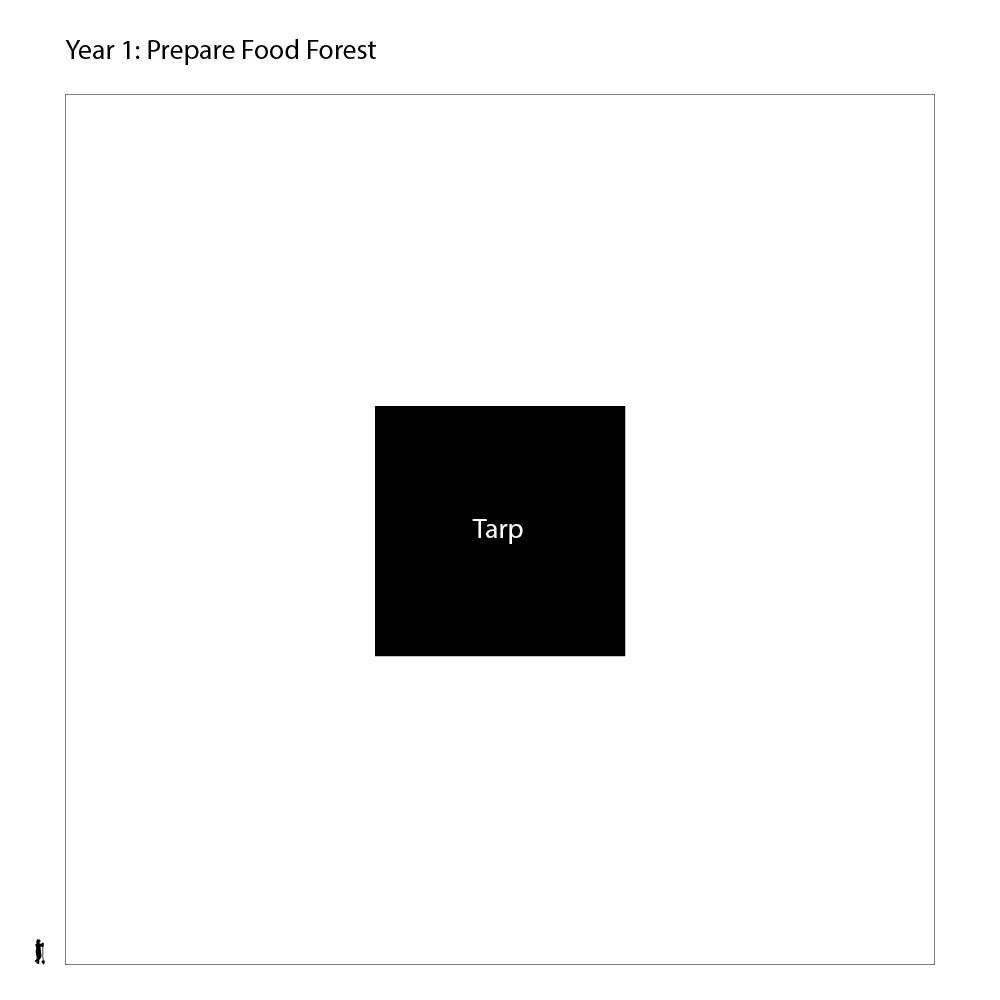
Designing for succession is key, otherwise, you’re left growing mostly grass for years before anything begins to bear. Strawberries present a perfect option, they mature within 2-3 years, create a solid ground cover, and by the time yields start to diminish your other trees/shrubs have matured. At which point the strawberries will have formed a dense mat functioning as a low/no maintenance living ground cover.
Year 1: Trees and shrubs are small and don’t hinder the strawberry production
Year 3: Trees and shrubs begin to produce, but are still small and interfere little with the strawberry production
Year 10: Trees and shrubs have reached full maturity. The primary function for the strawberries is now that of ground cover
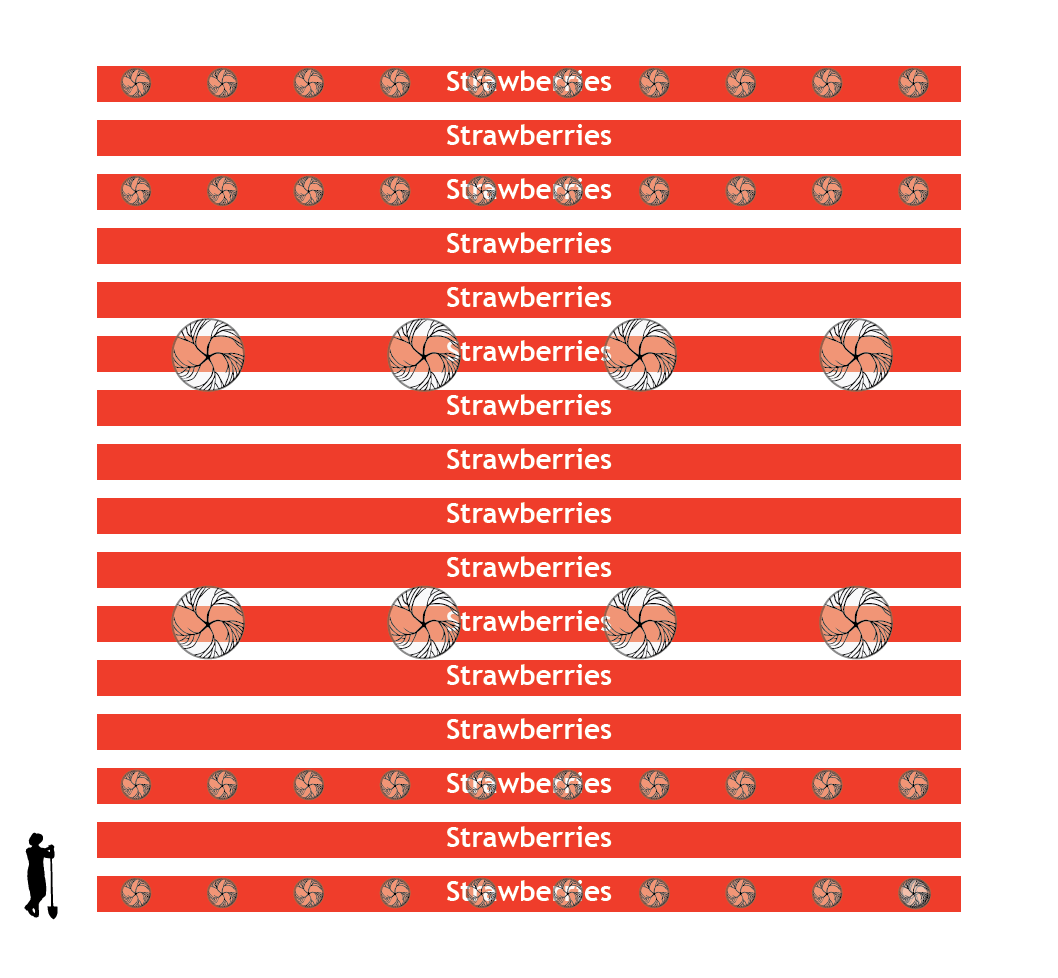
I recommend starting with half a block to get acquainted with the system and make any adjustments before investing large amounts of time, labor, and money.
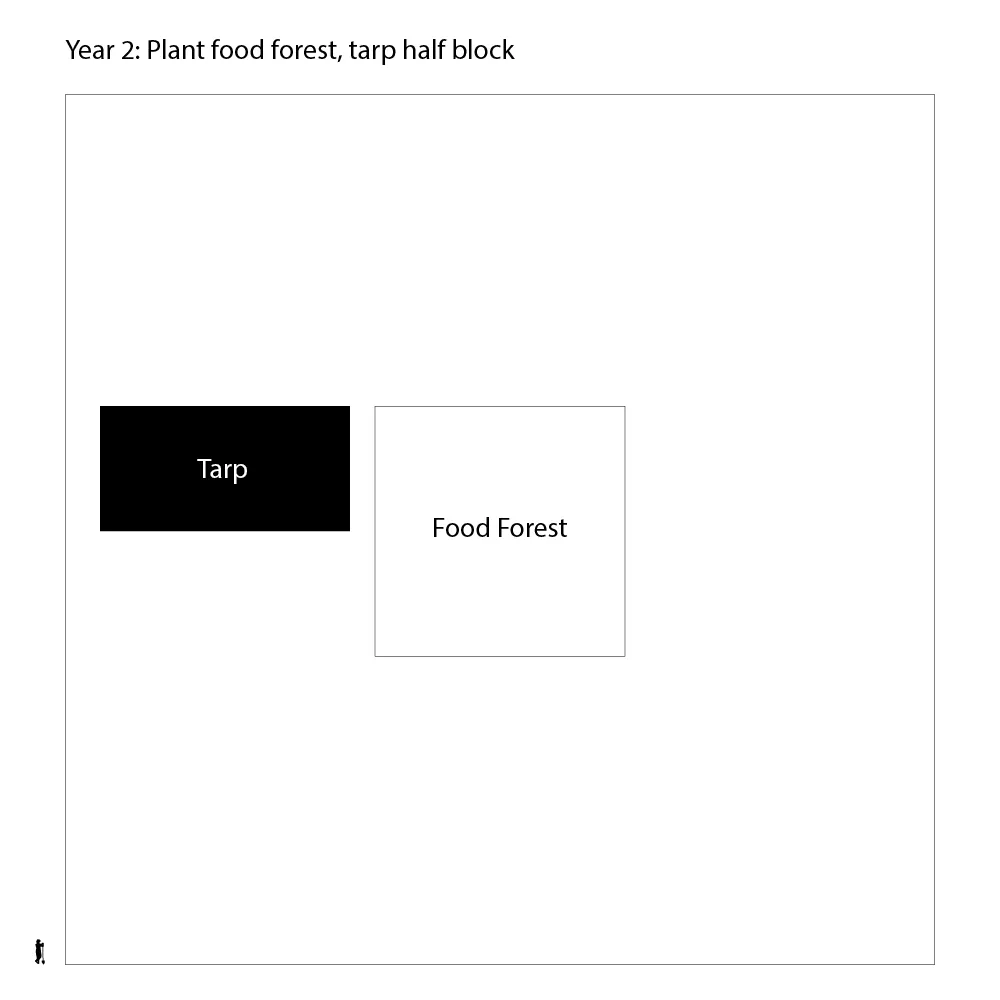
Plant a different set of plants for each bed, and record total production for each. That will inform you of what type of yields you should expect from your land at its current state

Rotate the previous years plan to the new half and plant a different set of plants in last years beds. Again, record all yields per bed.
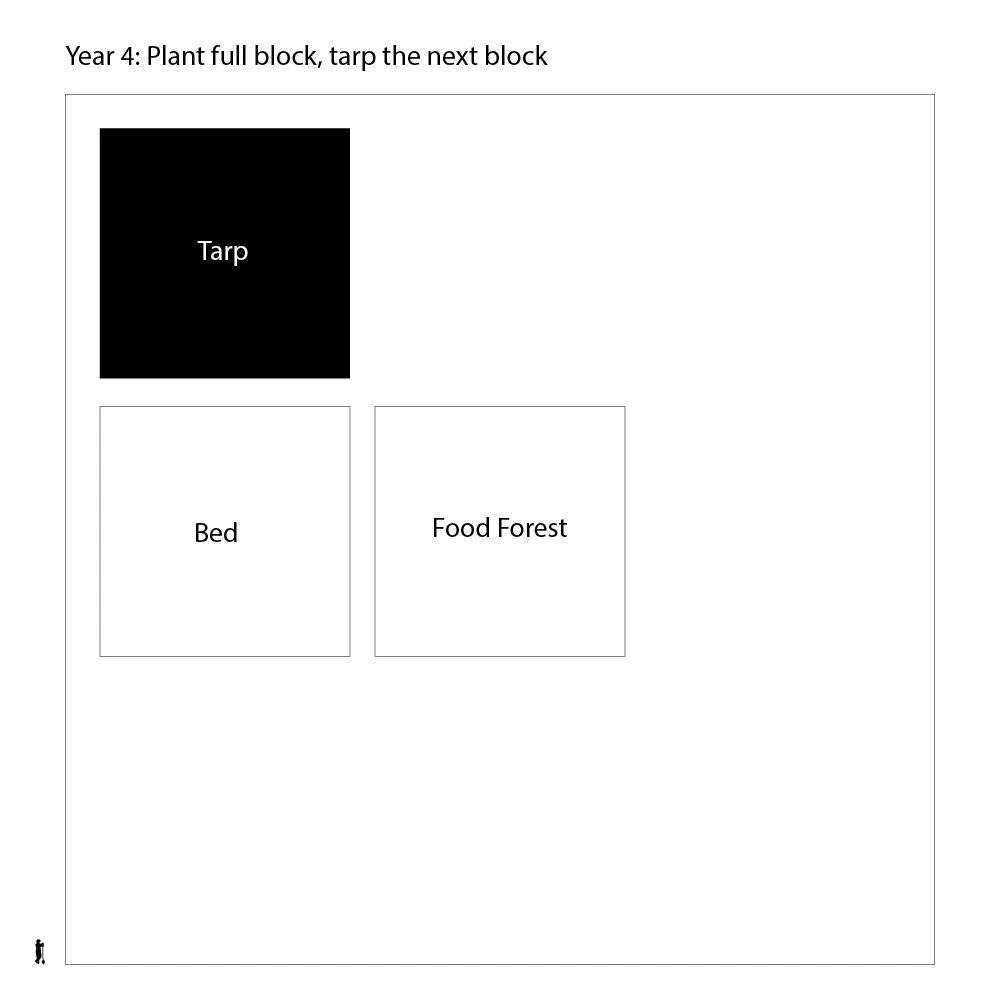
By this point, you should be proficient with the system and can handle prepping two beds at a time. Ideally, you would have acquired a BCS tractor or similar small tractor. If not, although possible, the scale will become very challenging from here out.
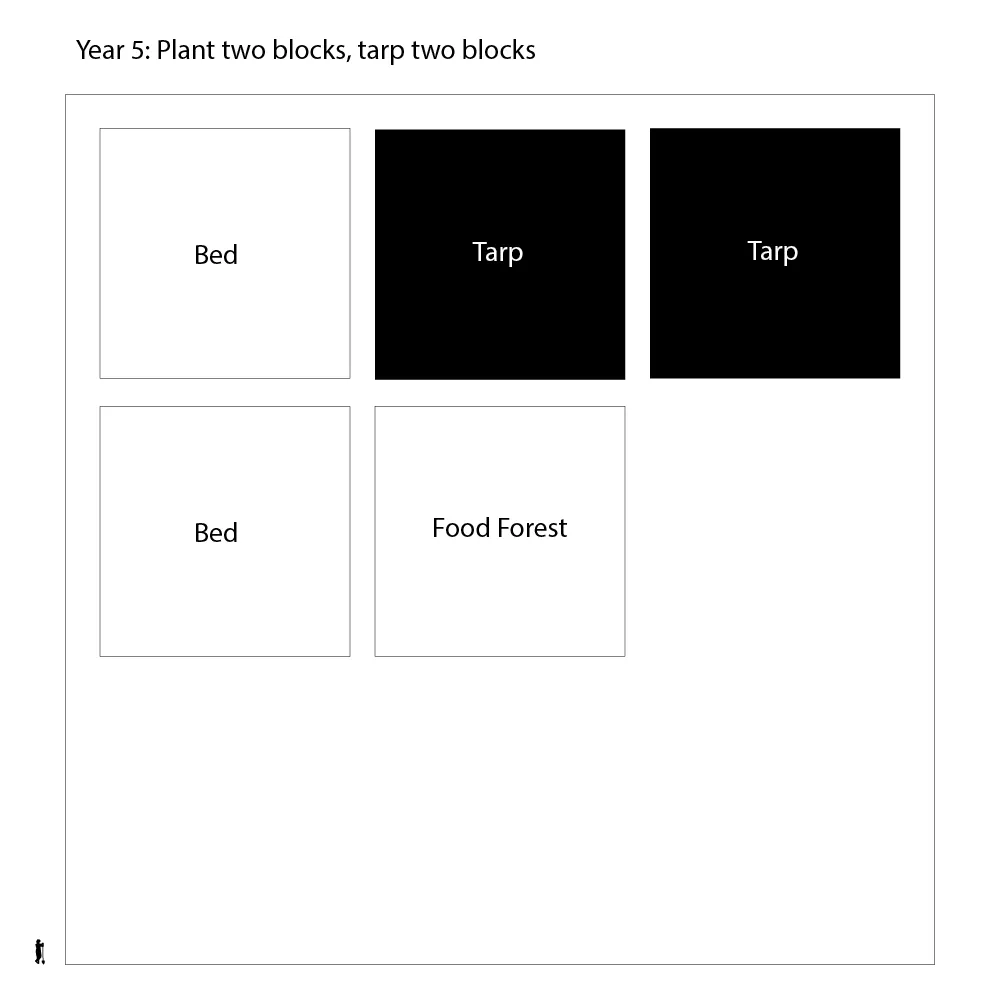
At this stage, you should have mastered the system and have fully customized it to your specific site and food needs. From here it’s just a matter of rotating every year and following the process.

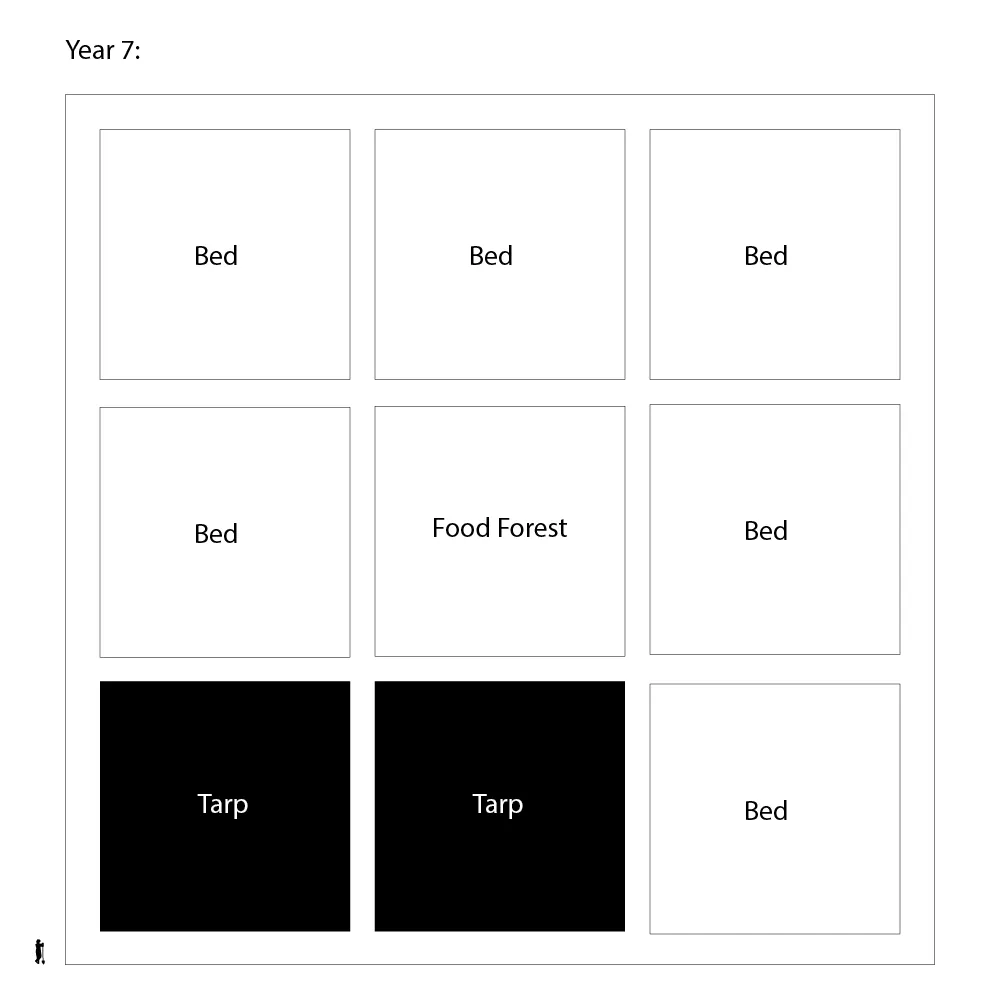
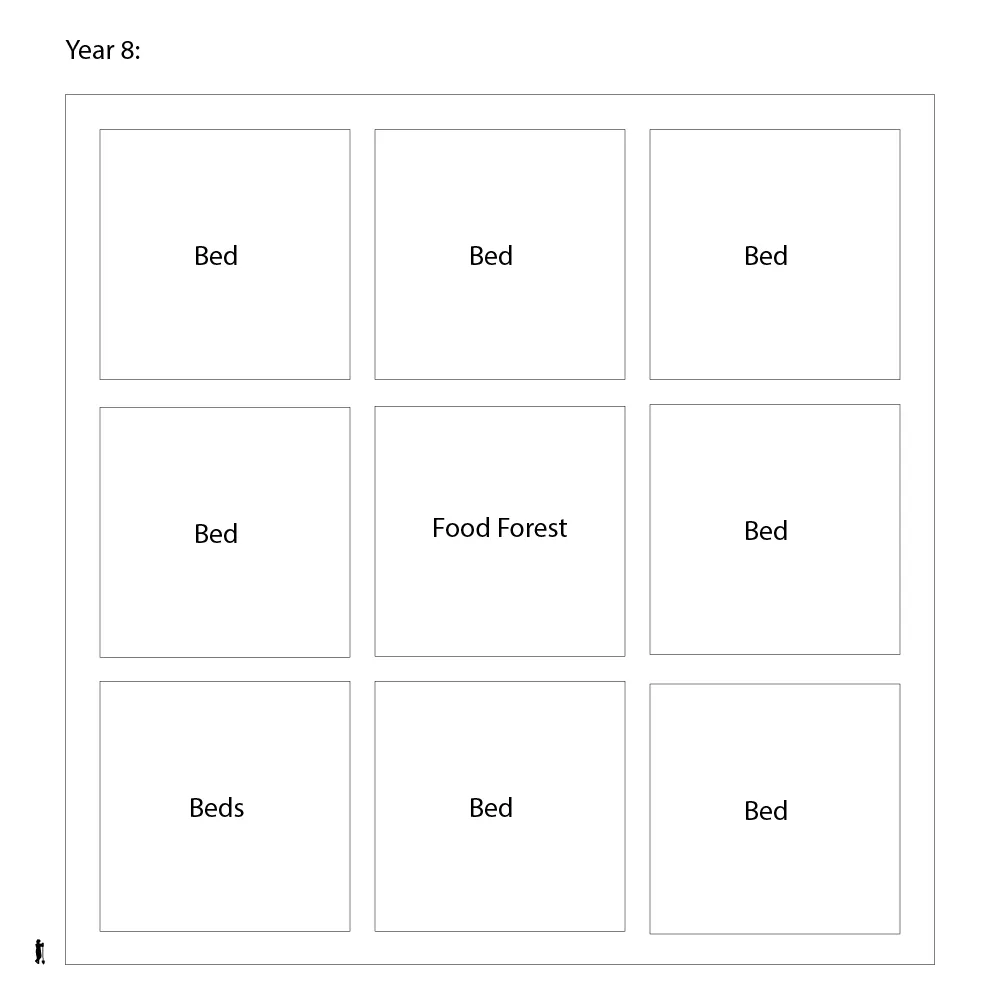
Final Notes
This was a sweeping overview of an integration of many methods from so many great trailblazers in the world of market gardening and ecological farming: Eliot Coleman, Richard Perkins, Jean-Martin Fortier, Mark from iamnjorganic, Curtis Stone, John Jeavons, Elaine Ingham, Toby Hemenway, and so many others. There is still much work to be done to refine, trial, and expand this design. I will continue to build on this with more examples, details, graphs, videos, charts, trials, and how-tos as the next season progresses. I look forward to hearing your thoughts, suggestions, and insights. Let's build a better, more abundant world together!